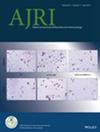Causal Relationship Between Abortion and Endometriosis: A Bidirectional Two-Sample Mendelian Randomization Study
Abstract
Problem
The relationship between abortion and endometriosis (EMS) has been inconsistent in previous observational studies and remains controversial. We intended to examine the causal relationship between abortion and EMS.
Methods of Study
We conducted a Mendelian randomization (MR) analysis using genome-wide association study (GWAS) summary statistics, drawing data from the FinnGen database and the UK Biobank. The primary analysis utilized the random-effects inverse variance weighted (IVW) approach, complemented by weighted median, weighted mode, and MR–Egger methods. Comprehensive sensitivity analyses were conducted, encompassing the Cochran's Q statistic for assessing heterogeneity and MR-PRESSO to detect pleiotropy. Additionally, Leave-One-Out (LOO) analysis was conducted to confirm the stability of our results.
Results
The IVW method revealed no statistically significant causal association between various types of abortion and EMS. Specifically, the odds ratios (ORs) were as follows: medical abortion (OR 0.96, 95% CI: 0.78–1.18, p = 0.72), spontaneous abortion (OR 0.99, 95% CI: 0.81–1.21, p = 0.92), and other types of abortions (OR 1.01, 95% CI: 0.99–1.03, p = 0.36), indicating no significant effects on the risk of EMS. Similarly, analysis in the reverse direction showed no significant causal effects of EMS on the likelihood of experiencing any type of abortion, with ORs for medical abortion (0.97, 95% CI: 0.91–1.03, p = 0.33), spontaneous abortion (0.98, 95% CI: 0.92–1.04, p = 0.50), and other abortions (1.30, 95% CI: 0.76–2.23, p = 0.34). Sensitivity analyses supported these findings, demonstrating no evidence of horizontal pleiotropy or significant heterogeneity.
Conclusion
Our MR results do not support a causal relationship between abortion and EMS.

 求助内容:
求助内容: 应助结果提醒方式:
应助结果提醒方式:


